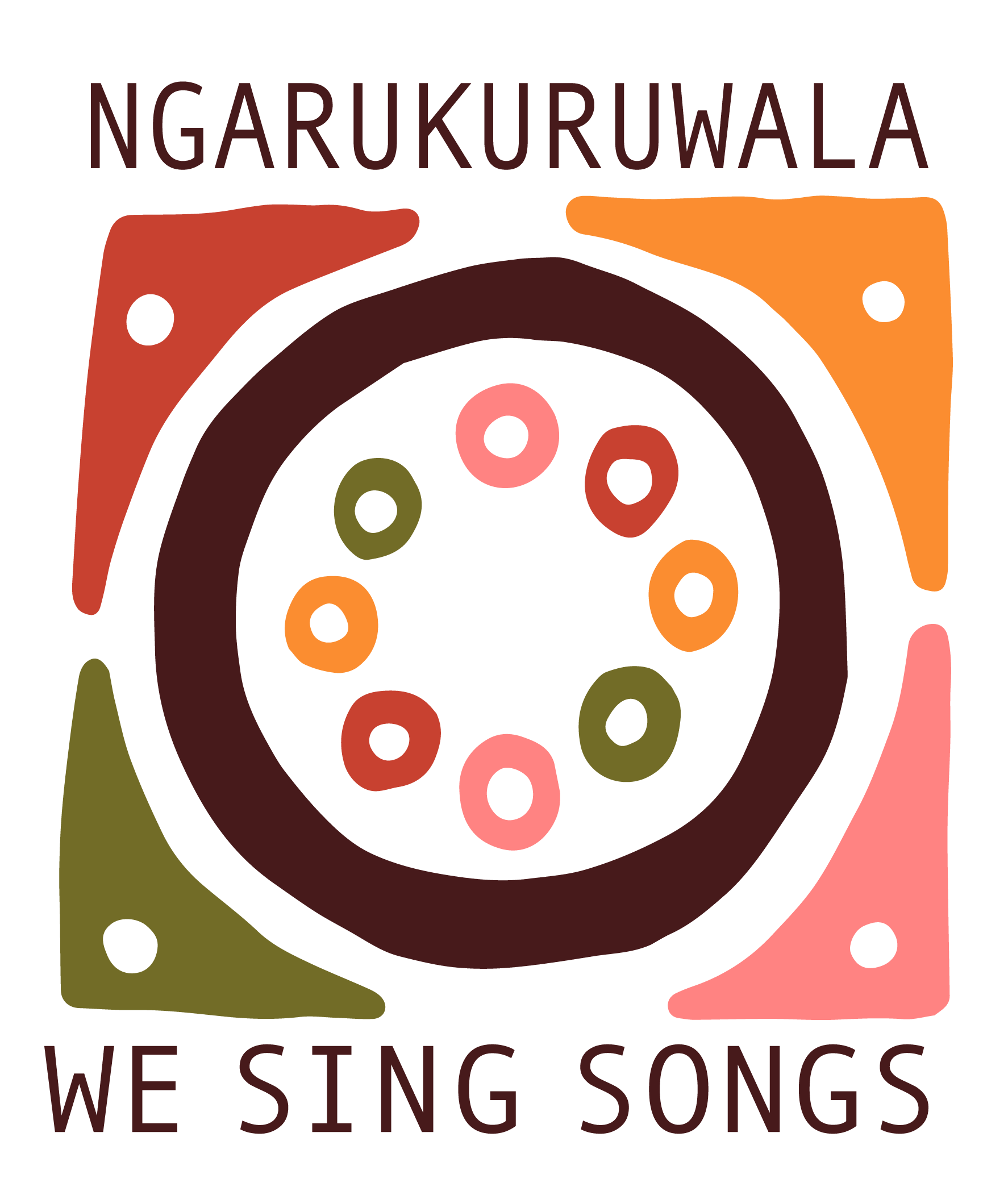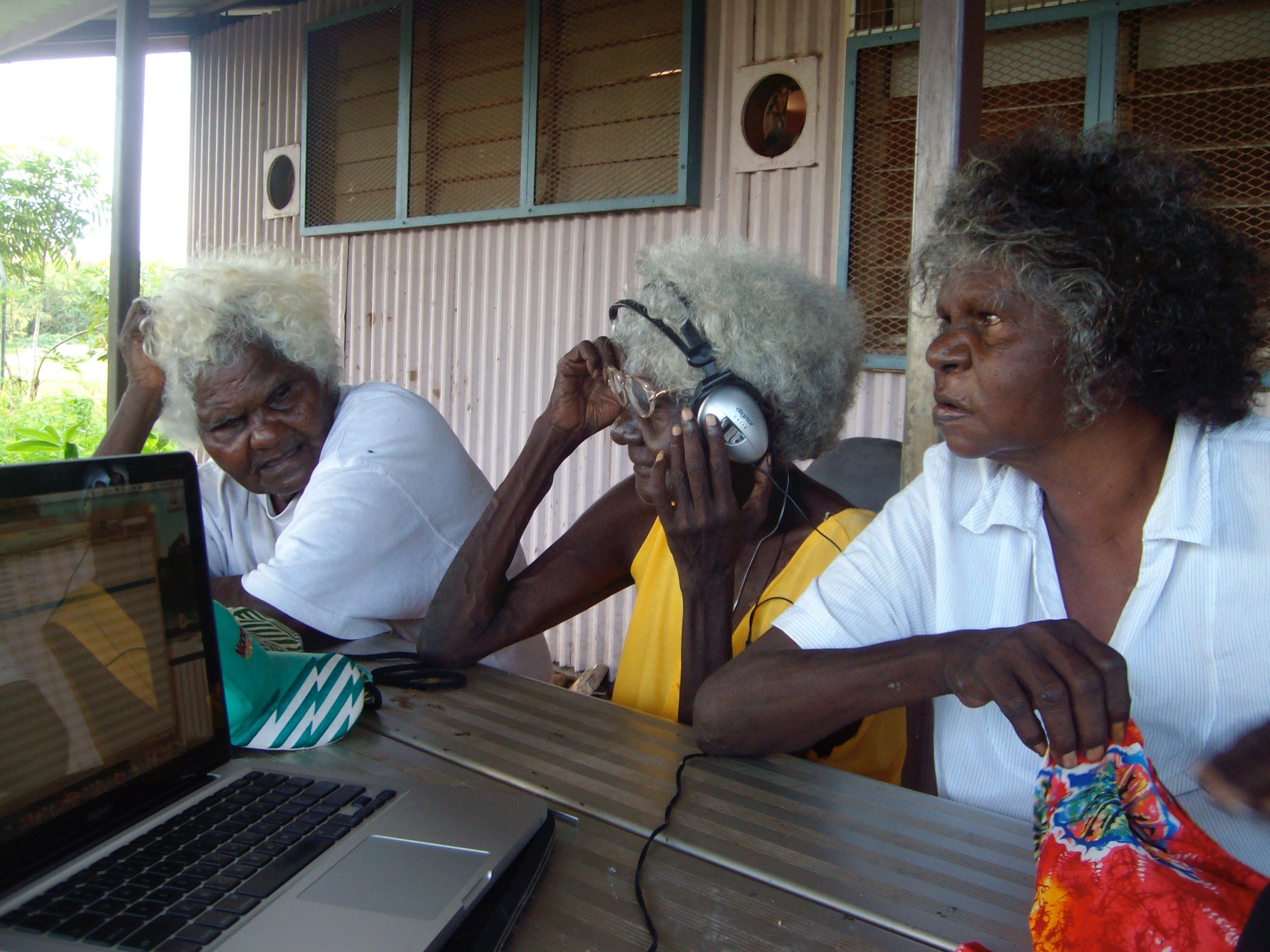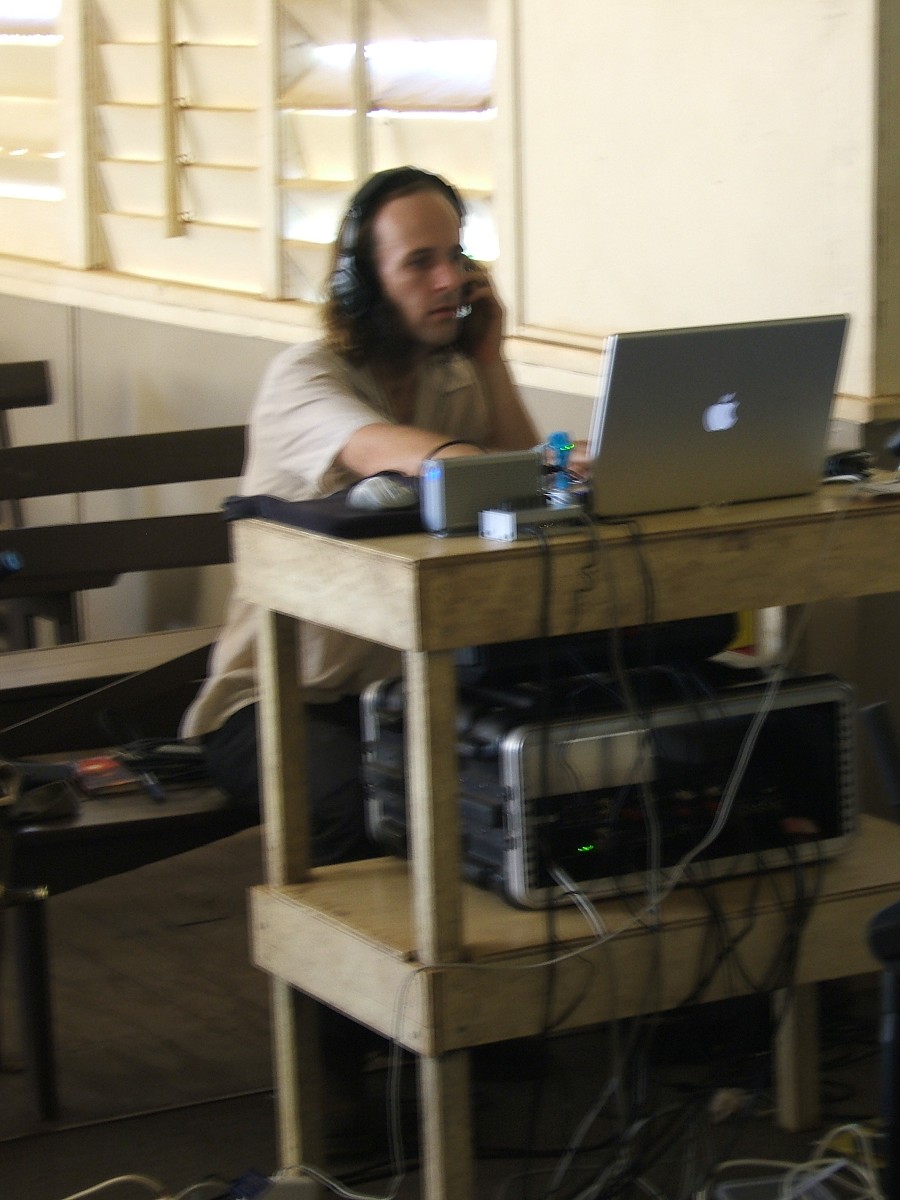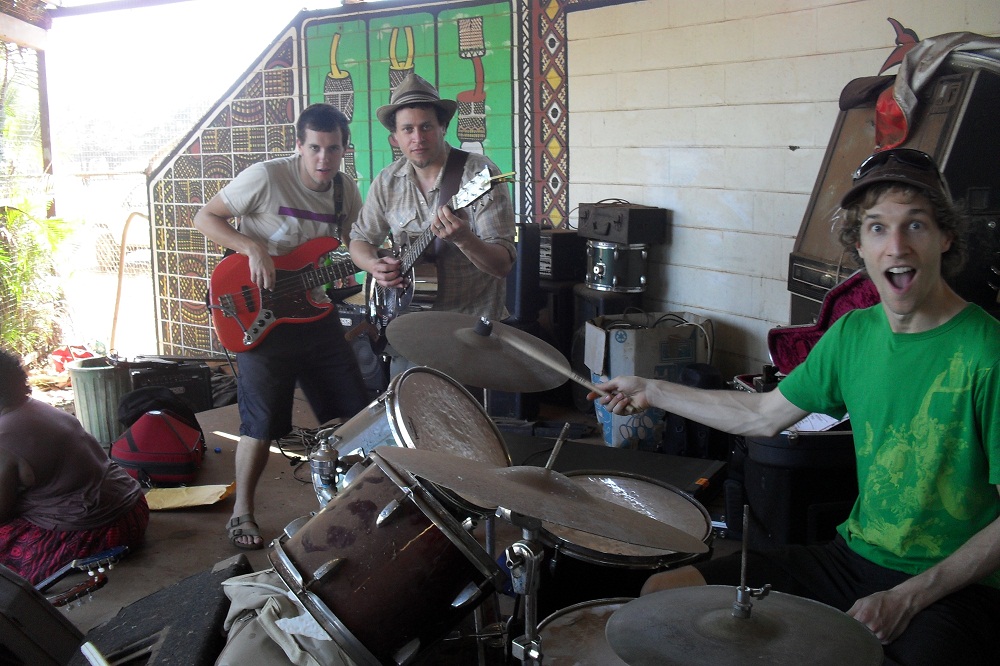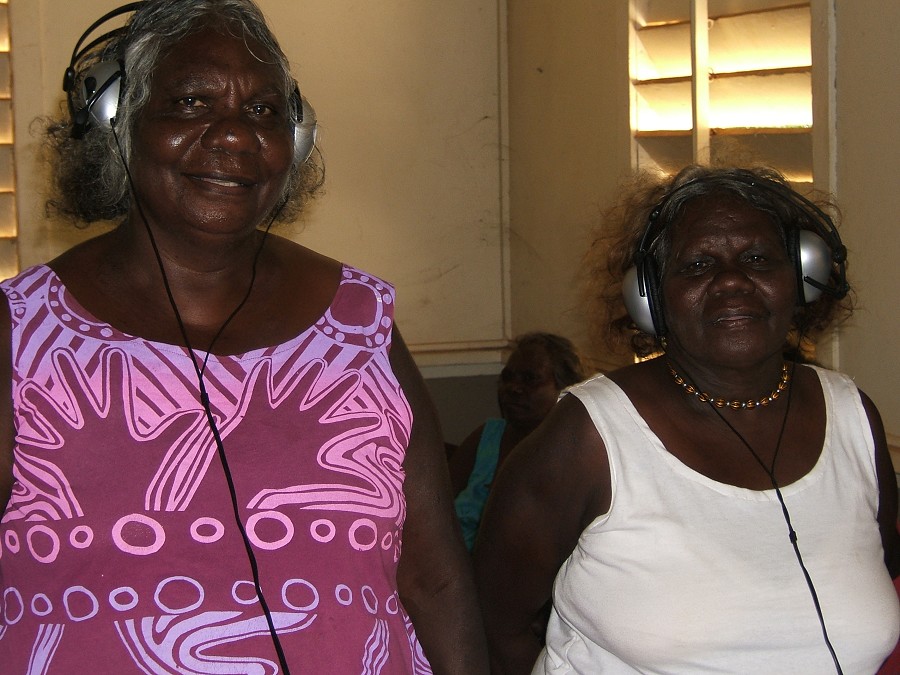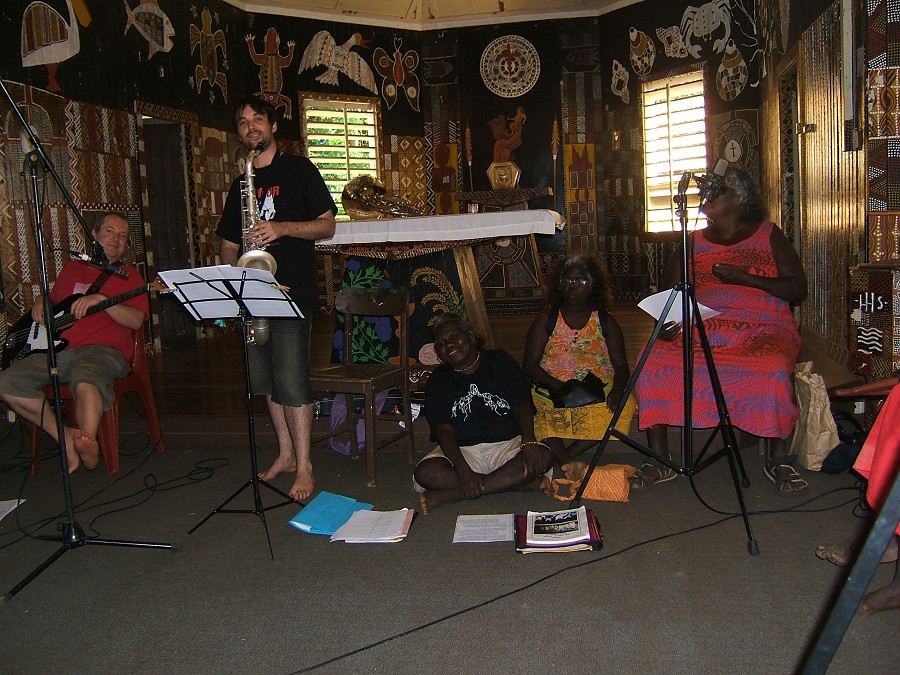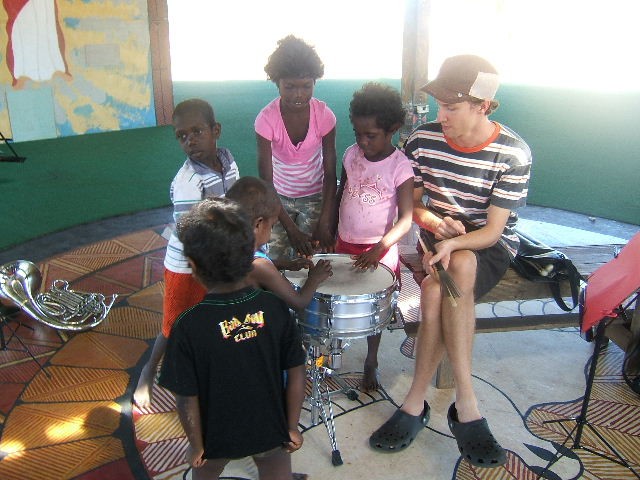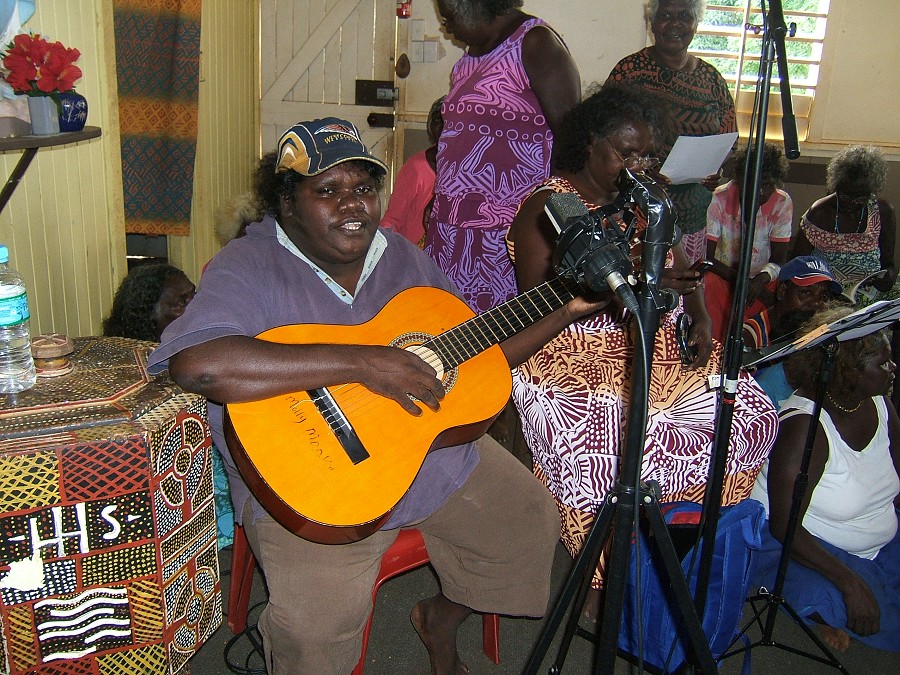Over the course of the project’s development and success there has been a renewed interest in the old songs, with young people wanting to learn from the women and we have begun the process of studying the old songs which form the basis of the Ngarukuruwala project.
The work of the group in the future will be, therefore, a drawing together of a number of threads; maintenance and sharing of Tiwi songs at a community level, the role of those songs in the context of contemporary performance and the desire to be part of the rediscovery and preservation of archived recordings of old Tiwi songs.
